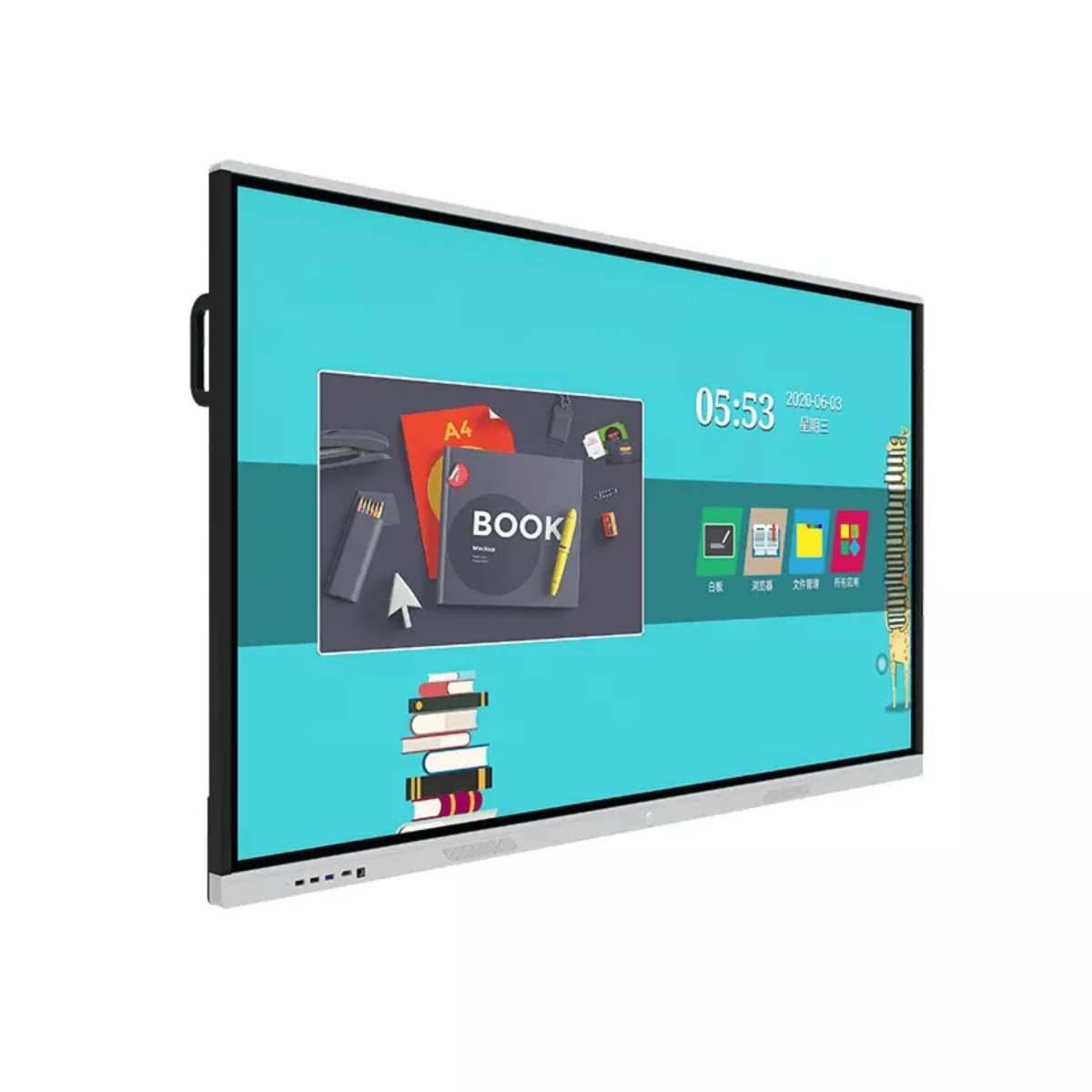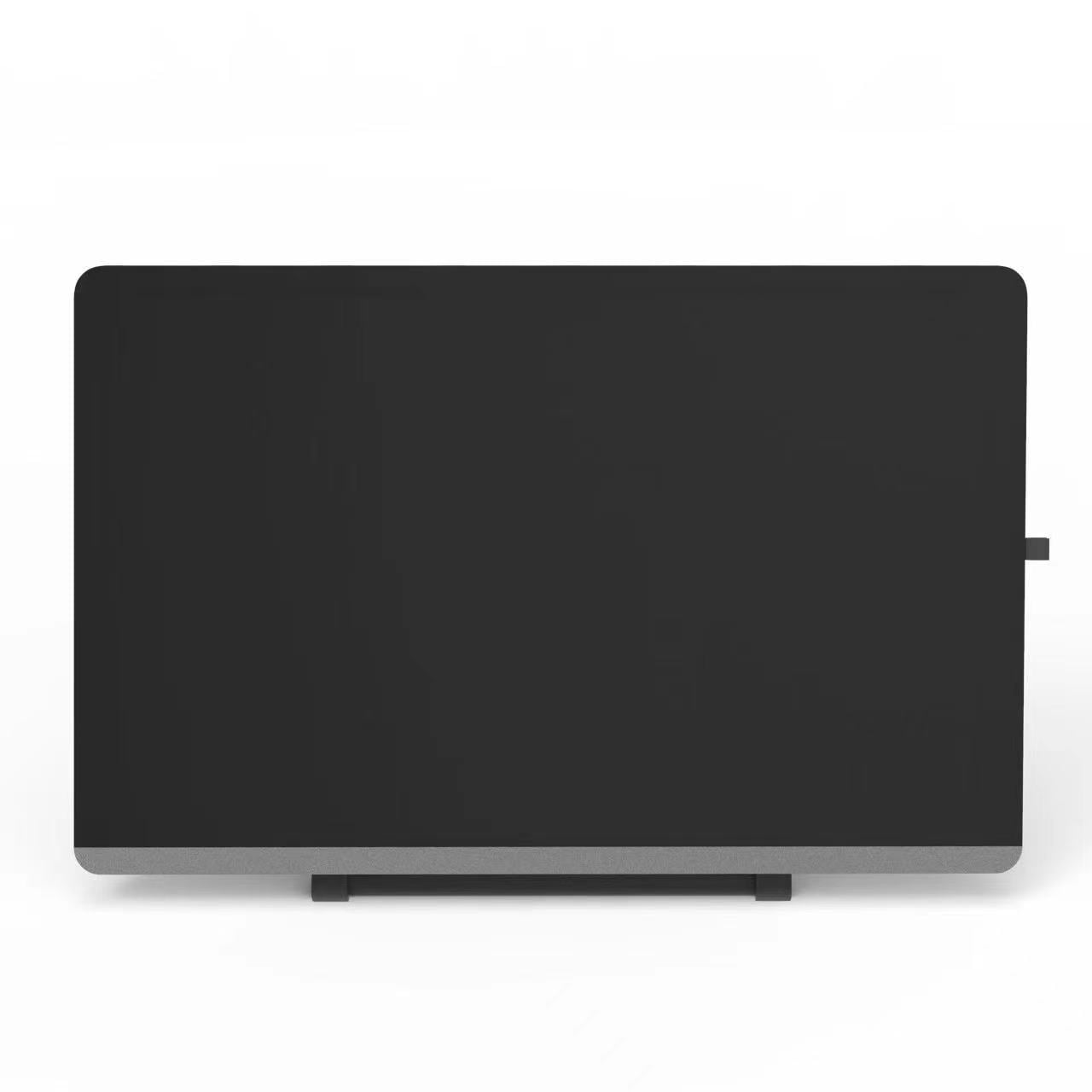When comparing interactive flat panels (IFPs) with interactive whiteboards (IWBs), it’s important to discuss their similarities, differences, and the advantages and disadvantages of each technology. Here are some key points to cover when exploring the topic:
Definition and Overview: Begin by defining interactive flat panels and interactive whiteboards. Explain that both technologies are designed to enhance interactivity in presentations and classrooms by allowing users to interact with the content displayed on the screen.
1.Display and Size: Compare the display characteristics of IFPs and IWBs. Interactive flat panels consist of large, touch-enabled screens that are integrated with computing capabilities, while interactive whiteboards are essentially large, touch-sensitive surfaces that require connection to an external computer or projector for functionality.
2.Installation and Setup: Discuss the differences in installation and setup. Interactive flat panels are self-contained units that can be mounted on walls or placed on stands, requiring minimal setup. In contrast, interactive whiteboards need to be mounted on walls and connected to a computer or projector for operation, which may involve more complex installation.
3.Touch Technology: Compare the touch technology used in IFPs and IWBs. Interactive flat panels typically use capacitive or infrared touch technology, allowing for precise touch and multi-touch functionality. Interactive whiteboards often use resistive touch technology, which can be less responsive and accurate compared to capacitive or infrared touch.
4.Screen Size and Resolution: Discuss the differences in screen size and resolution. Interactive flat panels are available in various sizes, ranging from 55 inches to over 110 inches diagonally, with high resolutions such as Full HD (1920×1080) or 4K Ultra HD (3840×2160). Interactive whiteboards are available in larger sizes but may have lower resolutions depending on the model and the accompanying projector.
5.Connectivity and Integration: Compare the connectivity and integration options of IFPs and IWBs. Interactive flat panels typically have built-in connectivity options, such as HDMI, USB, and wireless connectivity, making it easier to connect to other devices and share content. Interactive whiteboards require connection to an external computer or projector for functionality, which may require additional cables and setup.
6.Cost and Maintenance: Discuss the cost considerations and maintenance requirements of both technologies. Interactive flat panels tend to have a higher upfront cost due to their integrated computing capabilities and touch functionality. Interactive whiteboards may have lower upfront costs, but additional costs may be incurred for projectors and ongoing maintenance.
7.Flexibility and Mobility: Compare the flexibility and mobility of IFPs and IWBs. Interactive flat panels are standalone units that can be easily moved within or between classrooms or meeting rooms. Interactive whiteboards are typically fixed installations that are less portable and require a dedicated space.
8.Software and Application Support: Discuss the software and application support for both technologies. Interactive flat panels often come with pre-installed software and support a wide range of educational and collaborative applications. Interactive whiteboards rely on software installed on the connected computer and may have compatibility limitations with certain applications.
9.User Experience and Interactivity: Compare the user experience and interactivity of IFPs and IWBs. Interactive flat panels generally offer a more responsive and intuitive touch experience, supporting multi-touch gestures and features like palm rejection. Interactive whiteboards may have a slightly higher learning curve and may require more precise touch interactions.
When discussing the comparison between interactive flat panels and interactive whiteboards, it is important to consider the specific needs and requirements of the intended users, the available budget, the desired level of interactivity, and the installation constraints. By providing a comprehensive comparison, you can help users make informed decisions about which technology best suits their needs.



